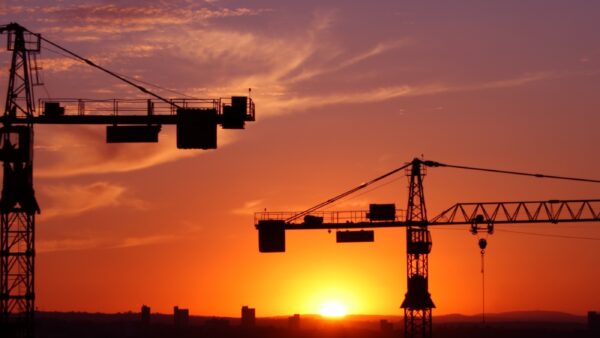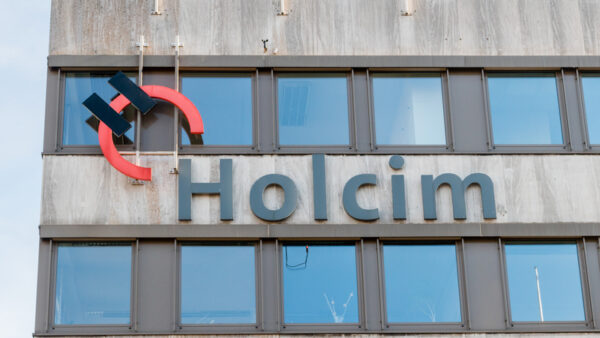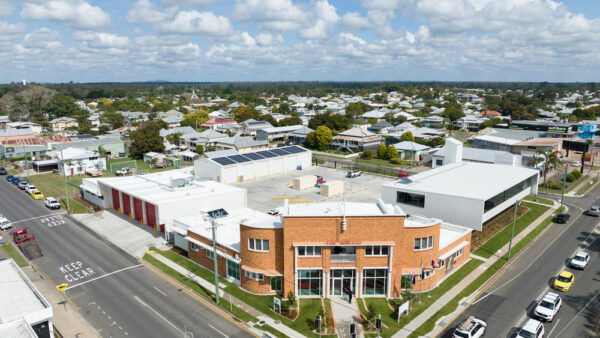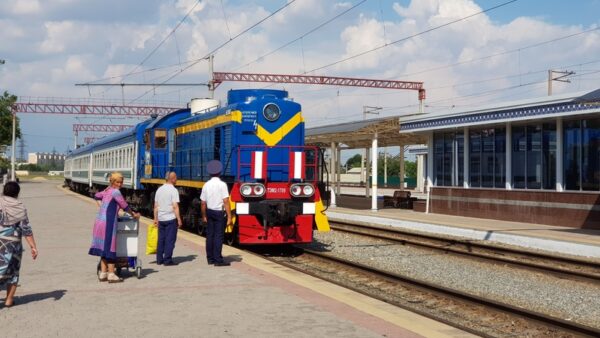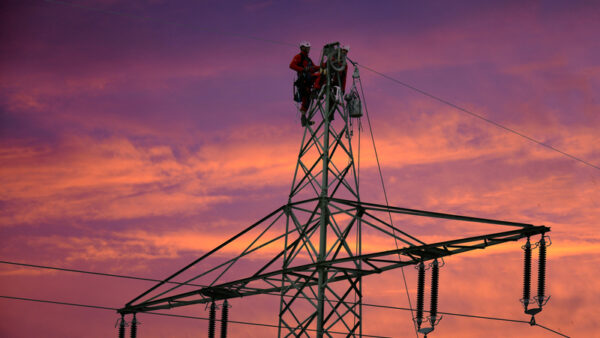A top Nicaraguan scientist has said that public unrest and opposition to the country’s transoceanic canal are growing due to the government’s secrecy over the project, and that the state’s suppression of protests has resulted in “militarised” zones along the canal route.
This is not a Nicaraguan problem, this is a world issue. This is supposed to be a project that is going to serve the world– Prof. Jorge Huete-Pérez, vice president of the Academy of Sciences for Nicaragua
Prof. Jorge Huete-Pérez, vice president of the Academy of Sciences for Nicaragua, said scientists in the country are concerned about the environmental impact of the $50bn canal, and called for international backing to ensure that impact assessments are conducted according to international standards, and are made public.
“For some reason the government handles this in a very secret way. It only puts out information that they want you to know,” said Huete-Pérez, who is also director of the Molecular Biology Center at the University of Central America.Â
“The opposition to this is growing and I think it’s as a result of the lack of transparency and a lack of information,” he said in an interview with GCR.
His comments come as a scientific body concerned with inland waterways, the International Society of Limnology (ISL), is collecting signatures from scientists around the world for a letter to the government of Nicaragua calling on it to halt canal work until environmental studies are completed and debated publicly.
The Chinese company that was granted the concession to build and operate the canal, Hong Kong Nicaragua Canal Development Group (HKND), started work on access roads on 22 December. Work digging the 276-km-long canal is expected to begin in the third quarter of this year, the company has said.
Meanwhile, the UK-headquartered consultancy conducting the environmental and social impact assessments, Environmental Resources Management (ERM), has told GCR that it, too, wants the studies it is preparing to be made public before work starts.
Scientists’ concern
Jorge Huete-Pérez said the Academy of Sciences expressed its concern about the project on the very day the government announced the concession to HKND in June 2013.
“The way this concession was given was without any consultation, mostly without any transparency,” he said. “It was in the news, the government was planning this project, it was quick to parliament for rush approval, and that’s it. That’s as much as we knew. So we as scientists were really concerned to take part in this and to be able to express our opinions.”
Since then the government has avoided dialogue with the Nicaraguan scientific community, he said. In November 2014 Nicaraguan scientists held a workshop for international experts to discuss the project and its environmental impact. Fifteen international and five Nicaraguan experts spoke. The government was invited to participate but, Huete-Pérez said, it pulled out at the last minute.
“So we said okay, look, let’s not do this publicly. Let’s just have a one-on-one, we won’t have any statements afterwards, but we need this discussion,” Huete-Pérez said. “We thought they would accept that, but they wouldn’t, so we were not able to have that top-level discussion.”
The workshop went ahead anyway, and was packed with members of the public. Huete-Pérez said it was standing-room only in the auditorium designed for 700, and that people stood outside the hall to listen. And despite the academic nature of the presentations, even rural farmers attended, he said.
In February 2014, Huete-Pérez along with German zoology professor Axel Meyer, wrote an article in the journal, Nature, warning that the canal could create an “environmental disaster in Nicaragua and beyond”.Â
The route of the canal traverses Lake Nicaragua, one of the largest tropical lakes in the Americas and an important source of drinking water and subsistence fishing. To accommodate large, ocean-going cargo ships, a 90-km path would need to be dredged through the lake to a depth of more than 27m from the current average depth of 15m. The authors warned that this would release millions of tonnes of damaging sedimentation, and said that salt infiltration from the coastal locks would damage the freshwater ecosystem. The introduction of invasive foreign species from container bilge water was another of their concerns. Approximately 400,000 hectares of rainforest and wetland will be destroyed, they claimed.
Environmental concerns have prompted the International Society of Limnology (ISL), to draft a letter to the Nicaraguan government calling on it to halt work on the canal until environmental studies are completed and debated publicly.
“Well-established international best practices require that environmental assessments be completed, vetted, and published before work begins,” the letter says. “The government’s actions are leading to an atmosphere of mistrust, confrontation and repression. We call on the Nicaraguan government to halt the project until these studies are completed and publicly debated.”
As of December 56 scientists, most from the US, had signed.
In January HKND announced that it had met with a mission from the Convention on Wetlands of International Importance (called the Ramsar Convention), but did not disclose the substance of the meeting. Ramsar did not respond to GCR’s request for information.Â
Impact assessmentÂ
HKND commissioned Environmental Resources Management (ERM) to conduct the environmental and social impact assessment (ESIA) for the canal.
ERM told GCR that the current plan is for the ESIA on the canal and associated port to be submitted to the Nicaraguan government in April this year. HKND is not obliged to publish the ESIA, but ERM said it wants the studies to be made public. In an emailed statement ERM’s principal partner in charge of the project, Dave Blaha, said: “It is our hope and recommendation that ample time will be allowed for public and expert review of the ESIA and the project design before a final Government decision.”
Regarding ISL’s call for no work to begin until proper studies are vetted and published, Blaha said: “ERM agrees completely”.Â
Announcing the start of work in December, HKND chairman and chief executive Wang Jing promised, “we will work in the principles of being transparent and impartial”. Huete-Pérez did not hold out much hope, however, that the ESIA would be made public or debated.
“Because of the way they have done it so far, things are not up front,” he said. “I think [the government] will probably present a summary of some chosen information because publicly, and at the international level, it’s in their interest to show that there is some transparency, but looking at the trend I don’t think they will present all the studies.”
He said that the scientific community in Nicaragua wants an independent committee to test the studies commissioned by HKND: “If you allow the company to prefer their own studies there is an obvious conflict of interest there because the concession was given and they are interested in making money. What if they find something major? Would that change the plans? Obviously that’s very difficult to believe.”Â
‘Militarised areas’
Meanwhile, the way the government has handled the project so far has eroded public support for it, Huete-Pérez said. “At the very beginning the project was very popular because Nicaragua is very poor and people need jobs, and the government is selling this as the way to get out of poverty,” he said.
“However, as people started learning that there is some information lacking here and that we don’t know the real environmental cost of this, and as they start telling you that you’re going to have to be displaced from your area, that that is the price to pay… the unrest is growing and the opposition to the project as well.”
The figure of 30,000 is often cited as the number of people who will have to leave their land to make way for the canal, but Huete-Pérez says some studies have shown that up to 120,000 people will be displaced.
“Unrest was very heavy in December when the project started and then it kind of wound down, but every day you have an opposition protest along the [canal route],” he said. “And wherever there are protests, they are suppressed, and you have some areas that are militarised. People are not sending their kids to school in those areas because those areas are militarised.”
Huete-Pérez called on the world to support calls for international standards to be applied in assessing and managing the environmental impact.
“This is not a Nicaraguan problem, this is a world issue,” he said. “This is supposed to be a project that is going to serve the world. So it should be of general interest, and the international community should offer help so that if the project is done, it is done properly. If there were any major environmental impacts it’s not just Nicaragua, the impacts are on the world because all the ecosystems are connected.”

